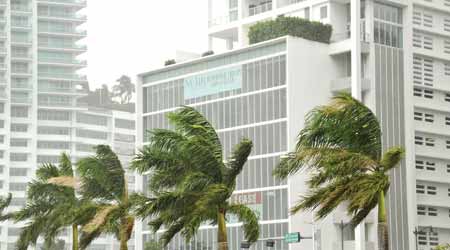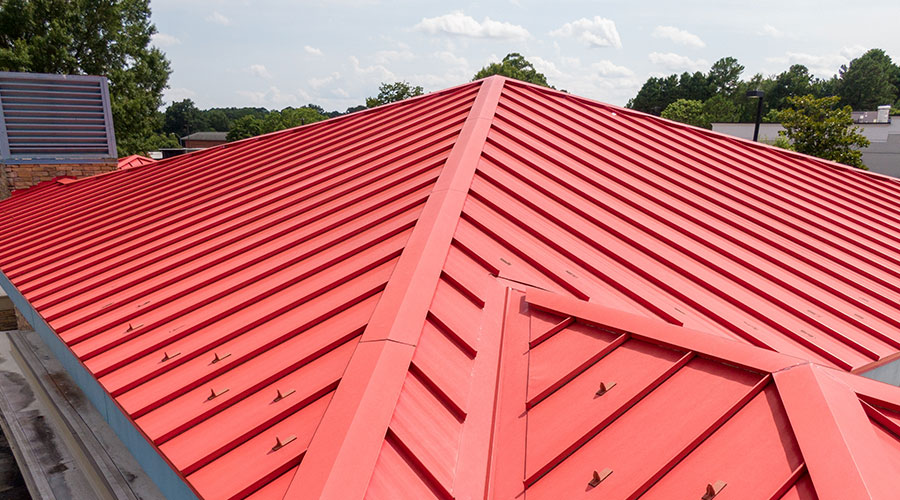 A hurricane poses two major threats to a roof: blowing debris and the loss of securement of the membrane.
A hurricane poses two major threats to a roof: blowing debris and the loss of securement of the membrane.Protecting Roofs From Heavy Winds
Heavy winds represent the biggest threat to roofs. Here are some steps to take to minimize damage.
Heavy winds usually accompany heavy weather. To counteract the effects of wind, be sure any loose items on the roof are secured, especially in areas prone to high winds such as hurricane zones and tornado alley. There is not much one can do to counteract a direct hit from a capricious tornado, but surrounding the actual tornado is severe weather where loose debris caught up in the wind will shred nearby roofs. The only thing that can possibly mitigate tornado winds is to be sure that the roof membrane is secured to the deck, that the deck is well connected to the structure, and that the building structure is tied down to the foundation.
Let’s talk about hurricanes. Much has been said about the total devastation of buildings after hurricane Irma and Maria this year. Those that were not totally destroyed might still be habitable except for the loss of the roofing. What could have been done to prepare for the storm?
The worst problems with high wind conditions come from loss of securement of the roof membrane and from punctures and tears from flying debris. Loss of securement generally happens first at corners where the uplift forces of the winds are the greatest. So, logically, the fastening of the corners becomes of prime importance. If you have an older roof that was installed prior to the current, more stringent codes, adding fasteners at the corners will help mitigate this problem. However, the real culprit is not usually the roof membrane itself but the edge conditions such as gutters, metal edges, and coping caps. If these are not well secured, they can and will tear the roof off with them when they lose attachment to the building. The corner peels back and the roof rolls up right along with it.
If you are preparing for a high wind event, check the attachment of the edge metal if you can. It may not be possible to check the attachment directly because of the way these are installed, but if you can lift the vertical piece of the metal edge or gutter away from the building, it may also be possible for the wind to get under and lift it. If you are unsure whether the attachment is sound, screwing a metal edge to the building through rubber gaskets or adding more fasteners to a gutter can help keep it on and help keep your roof on also.
Cleaning the roof is the most important high-wind preparation. Flying debris can cut the roof membrane, resulting in a myriad of leaks.
Wind uplift design only takes into consideration the pressures exerted on the roof from above that suck the roof off the building. It does not consider any pressure developed by wind getting under the membrane and pushing up from below. Sometimes, large cuts in the roof can cause the entire roof to be blown off from this additional stress on the fastening system. Flying debris can come from sources other than junk on the roof. Debris left behind by air conditioning and cooling tower repairs, chemicals from water treatment, ladders, and other detritus left behind by workers can also become airborne. Anything not tied down should be taken off the roof before a storm. This is worth repeating. Anything not attached should be removed.
Even components of the roof itself can become airborne. If the HVAC technicians do not properly reattach access doors, the sharp edges on the doors become knives that slice up roof membranes as they fly away. Check the access doors to be sure they are secured. Even HVAC units themselves can be knocked off their supports during a windstorm. Every piece of mechanical equipment on the roof should be strapped to its support and the support attached to the structure. No unattached wood 4x4 sleepers allowed.
Related Topics:














